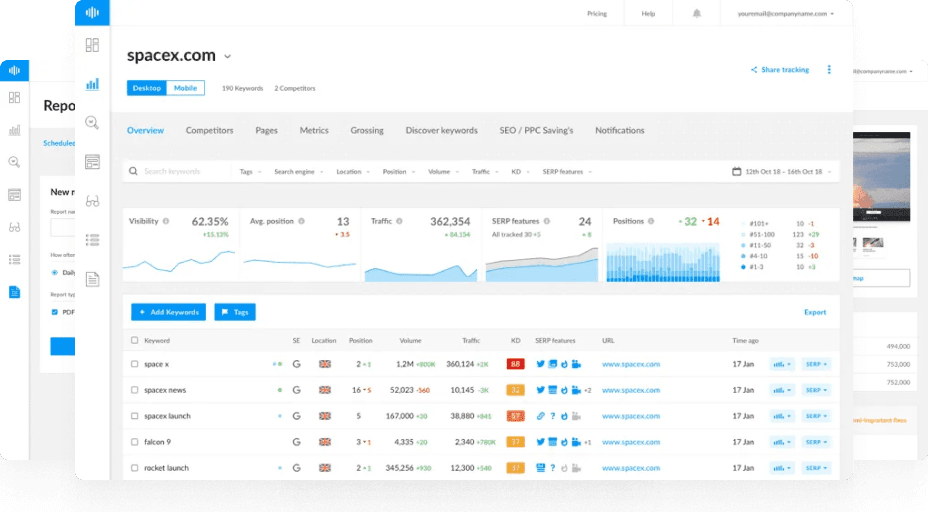What is Knowledge Graph Reconciliation?
Knowledge Graph Reconciliation is the process of aligning and verifying entity data across multiple knowledge systems — such as Google’s Knowledge Graph, Wikidata, Schema.org, and LLM-based retrieval models — to ensure consistent, accurate representation of a person, organization, product, or concept online.
In simpler terms, it’s how you make sure that search engines, AI systems, and knowledge databases all understand your brand or entity in the same way.
When reconciliation fails, entities can fragment — leading to duplicate or conflicting entries. For example, Google might display outdated information about your company, or an AI model might confuse your product with a competitor’s.
Why Is Knowledge Graph Reconciliation Important?
Search engines and generative AI rely on Knowledge Graphs to connect facts, attributes, and relationships.
If your data isn’t consistent across different sources, you risk being misrepresented or omitted entirely from these systems.
1. Consistency Builds Trust
When entity attributes (name, logo, description, URLs) match across Google, Wikidata, Crunchbase, and Schema.org, it reinforces credibility for both users and machines.
2. Better AI and Search Understanding
LLMs and AI systems use Knowledge Graphs to interpret facts and context. Accurate reconciliation ensures your brand or content is correctly cited in AI summaries, such as Google AI Overviews or Bing Copilot.
3. Prevents Data Fragmentation
Discrepancies between structured data and external profiles can cause Google to split one entity into multiple entries — diluting authority signals.
4. Supports E-E-A-T and Brand Authority
A reconciled Knowledge Graph presence strengthens your E-E-A-T (Experience, Expertise, Authoritativeness, Trustworthiness) profile, increasing your likelihood of inclusion in high-value search features.
How the Knowledge Graph Works
Google’s Knowledge Graph is a vast database of interconnected entities ��— people, places, things, and concepts — linked by relationships and attributes.
Reconciliation ensures that your entity is:
- Correctly identified (no duplicates or ambiguities).
- Linked to accurate attributes (e.g., founding date, logo, URL).
- Connected to relevant entities (e.g., founders, services, industries).
When AI models retrieve information, they rely on this graph for factual grounding. If your brand data is mismatched, you may be excluded from AI-generated summaries or answer boxes.
How to Perform Knowledge Graph Reconciliation
1. Define a Single “Entity Home”
Designate one authoritative URL — typically your “About” page or company profile — as the canonical source of truth for your entity. Use internal and external links to point back to it.
2. Implement Schema Markup
Use Organization, Person, Product, and Article schema types with accurate properties like:
nameurllogosameAs(for linking external sources)founderorparentOrganization
Ensure schema data matches what appears on your external profiles.
3. Link to Trusted External Databases
Use the sameAs property to connect to reputable data sources such as:
- Wikidata
- Wikipedia
- Crunchbase
- Google Business Profile
The more verified external connections your entity has, the easier it is for AI and search engines to confirm identity.
4. Ensure Metadata Consistency
Your business name, description, address, and URLs should match exactly across all references — including Schema, Google Search Console, Knowledge Panels, and social profiles.
5. Monitor Knowledge Panel Accuracy
Use Google’s Knowledge Panel feedback tool to request corrections or updates when inaccurate information appears.
6. Validate Structured Data
Run schema markup through Google’s Rich Results Test and Ranktracker’s Web Audit tool to catch errors or missing fields.
7. Track Knowledge Graph Entries
Use tools like:
- Google’s Knowledge Graph Search API
- Kalicube Pro
- Ranktracker’s SERP Checker (for Knowledge Graph SERP features)
These tools help confirm whether your entity is recognized and properly linked.
Knowledge Graph Reconciliation and AI Search
Generative AI systems, including Gemini, GPT-4, and Claude, increasingly depend on structured entity data to avoid misinformation and hallucination.
When your data is reconciled across all sources, these models are more likely to:
- Retrieve accurate brand information.
- Cite your content as an authoritative reference.
- Avoid conflating your entity with similar names.
Inconsistent data, by contrast, can lead to exclusion from AI-generated answers or summaries.
Example: Ranktracker’s Entity Reconciliation
- Primary Entity: Ranktracker (Organization)
- Canonical URL: https://www.ranktracker.com/about/
- Schema Type:
Organization - External Links: Wikidata, LinkedIn, Trustpilot, Crunchbase
- Attributes: Name, logo, description, founder (Felix Rose-Collins), location, tools offered
By maintaining consistent data across all these systems, Ranktracker strengthens its entity recognition, helping it appear accurately in Google’s Knowledge Graph, AI Overviews, and LLM-generated summaries.
Knowledge Graph Reconciliation vs Traditional SEO
| Feature | Traditional SEO | Knowledge Graph Reconciliation |
|---|---|---|
| Focus | Keywords, backlinks | Entities, attributes, relationships |
| Goal | Rank pages on SERPs | Maintain factual consistency across systems |
| Optimization Layer | On-page & off-page SEO | Structured data & semantic web alignment |
| Impact | Organic visibility | Entity inclusion in AI and Knowledge Panels |
The Future of Knowledge Graph Reconciliation
As AI and search converge, entity reconciliation will become a core SEO discipline.
Future trends include:
- Automated entity mapping tools within CMS systems.
- Real-time Knowledge Graph validation APIs.
- Integration of reconciliation into LLM Optimization and GEO workflows.
Summary
Knowledge Graph Reconciliation ensures your entity is recognized accurately and consistently across all digital ecosystems.
By aligning structured data, external profiles, and semantic relationships, you improve your brand’s visibility, authority, and eligibility for inclusion in Google’s Knowledge Graph, AI Overviews, and generative search experiences.
It’s the cornerstone of Entity SEO and a critical foundation for AEO, GEO, and LLM Optimization.
